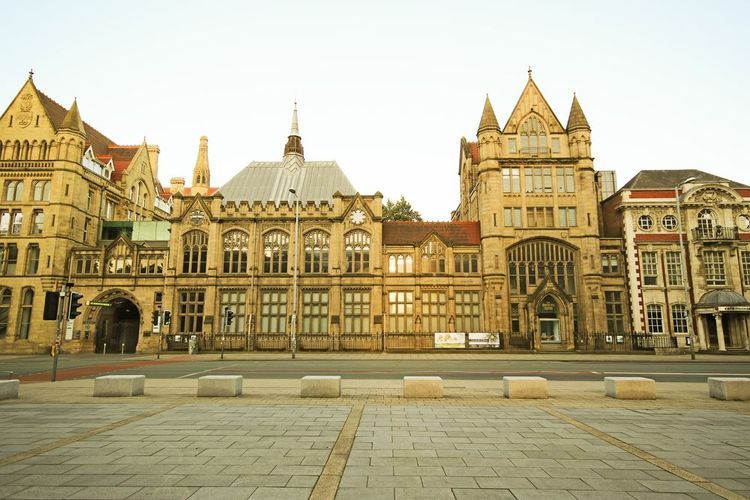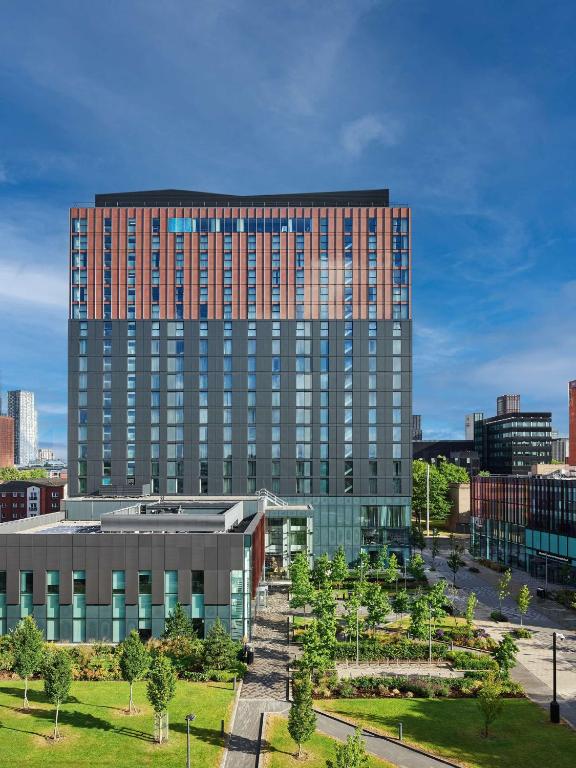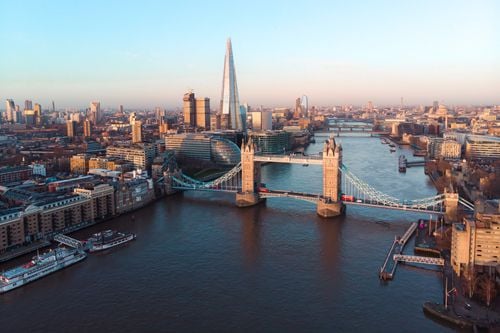The history of the Manchester Museum dates to 1821 with the formation of the Manchester Natural History Society, which assembled upon the death of local collector John Leigh Philips to purchase his entomological collection, or, as he called it, his ‘cabinet of insects’. A small display gallery was opened on Peter Street in 1835 and the collections steadily grew from there thanks to donations from members and patrons until the University of Manchester officially absorbed the collections in 1875. University authorities subsequently commissioned the present-day museum building to house the museum artefacts, which by then comprised an extensive spectrum of natural-history fields. The museum’s world-famous egyptology collections were donated in 1912 by Jesse Haworth, a local textile merchant and keen egyptologist, who also funded the construction of a new pavilion to house his objects, while an ethnographic wing was erected in 1927 as the overall collection continued to diversify, eventually swelling to its present size of over 4.5million objects and artefacts.
One of the most impressive museums in Britain, the Manchester Museum has existed in some capacity since the nineteenth century and boasts one of the most comprehensive collections in the world, with 4.5million artefacts that cover everything from archaeology and anthropology to botany and geology to palaeontology and entomology. So, in short, the Manchester Museum is truly a venue with something for everybody. Housed in a foreboding neo-Gothic palace along Oxford Road, one of the city’s central arteries, visitors could spend a whole day just getting lost in the expansive hallways and will come out indelibly enriched, having learned infinitely about the world around them and its civilisations, both lost and present. Natural history and human history, the Manchester Museum has it all!

Manchester Museum.
- © Alastair Wallace / ShutterstockHistory
In 2021, the museum temporarily closed to undergo a major refurbishment as part of a £13.5million reconstruction programme, reopening in February 2023. It welcomed over 52,000 guests in its first week back. The renovated museum includes a two-storey extension and several new galleries, including the Lee Kai Hung Chinese Culture Gallery, which explores historical and contemporary links between Manchester and China, and the South Asia Gallery, the first permanent gallery in the UK that celebrates and explores the rich histories and cultures of the UK’s vibrant South Asian diaspora. Assembled in collaboration with the British Museum, it showcases over 140 historical artefacts alongside contemporary commissions covering six central themes: Past & Present, Lived Environments, Science & Innovation, Sound, Music & Dance, British Asian, and Movement & Empire.
Explore the Collections
Manchester Museum’s collections contain a spectrum of objects and artefacts comprising both natural and human history. It would be impossible to comprehensively list everything that they have on display in our guide, however here’s a quick guide to some of the highlights that you simply can’t miss if you visit:
Egypt and Sudan (‘ancient Egypt’)
Manchester Museum is perhaps most famous for its Egypt and Sudan collections, one of the most comprehensive in the UK. The collections recount the story of the civilisations known as ‘ancient Egypt’ that inhabited northeastern Africa from 3000 to 300 BCE, many of which being taken from the pyramid builders’ town of Kahun which has given archaeologists one of the most complete insights into day-to-day life for average people in the period. Another highlight of the collections is the ‘Faiyum Portraits’, gilded masks and realistic painted portraits that date to the Graeco-Roman Period, between 300 BCE and 300 CE.
Archaeology
Manchester’s archaeology collections look at and reconsider histories on both a local and international level, re-curated to vivisect archaeology as a discipline rooted in the exploits of wealthy, White European men in centuries passed. A rich collection of ancient Assyrian (present-day Iraq) artefacts are privileged to interrupt and challenge traditional presentations of certain ancient - and modern - civilisations, while there is also a wealth of local artefacts on display, including findings from a 1980 excavation of the Roman fort at Castlefield and Neanderthal relics from the Creswell Crags in the Peak District.
Earth Sciences and Fossils
Manchester Museum’s Earth Sciences collection is one of the oldest in the museum, started in 1838 by the Manchester Geological Society. It consists of 140,000 specimens, including a basalt pillar from the Giant’s Causeway in Northern Ireland and models of famous diamonds, however the collection’s most exciting dimension is its 100,000 fossils, ranging from fossil algae to Stan, the 65-million-year-old T-Rex whose 198-piece skeleton greets guests at the entrance of the museum. Excavated in South Dakota in 1923 and weighing over three-tonnes, Stan is the second most-complete Tyrannosaurus Rex specimen in the world and is an icon of the city, attracting countless visitors from around the world to Manchester every year
The Vivarium
Alongside these extensive collections of species long gone, Manchester Museum is home to a miniature zoo known as The Vivarium, where it keeps and breeds live amphibian and reptile specimens, many of which are critically endangered. Committed to the highest conservation standards, Manchester Museum’s Vivarium recently celebrated a massive victory in successfully breeding the Variable Harlequin Toad in captivity for the first time in conservation history. A tiny species of amphibian originating from Panama and Costa Rica, climate change has caused wild populations to plummet and the toad is now recognised as critically endangered.
Practical Information
How to get there
Manchester Museum is located along Oxford Road, one of the city’s main bus routes, and thus is well-serviced, with the 15, 18, 41, 42, 42A, 42B, 43, 53, 111, 142, 143, 147, 191, 197, V1, and V2 lines all stopping outside Manchester Museum from various directions. It is a seventeen-minute walk from the St. Peter’s Square Metrolink tram stop, or a twenty-five minute walk from the main tram terminus at Piccadilly Gardens. There are six car parks on the University of Manchester campus; the nearest one to the museum is UoM Car Park D, accessible via Higher Cambridge Street. For more information, visit the museum website here.
Opening times and tickets
Manchester Museum is open from 10am to 5pm every day of the week, except for Mondays when it is closed. Tickets to the museum are free, however it is recommended that you book a slot in advance for temporary exhibitions. Tickets can be booked from the website here.
Accessibility
Manchester Museum strives for the very best in accessibility and offers a range of accessibility features, including lifts, quiet rooms, hearing loops, and a resident therapy dog, Murray! For more accessibility information, visit the website here.
Our favourite hotel near Manchester Museum
 Manchester
Manchester






